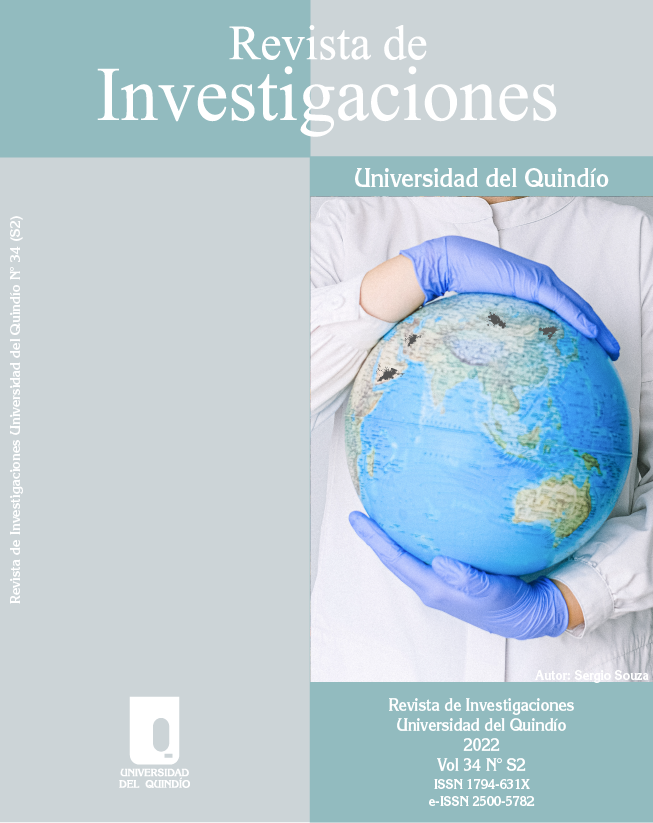La modelización como herramienta de gestión eficaz para el desarrollo regional integrado
DOI:
https://doi.org/10.33975/riuq.vol34nS2.937Palabras clave:
desarrollo regional, potencial competitivo regional, modelización, desarrollo integradoResumen
Asegurar un desarrollo territorial sostenible es una de las tareas clave para el desarrollo de las industrias regionales y el aumento del nivel de seguridad alimentaria de las regiones y del país en general. La solución al problema de desarrollar e implementar un mecanismo competitivo para el desarrollo territorial debe basarse en los principios y métodos de la moderna planificación estratégica territorial-sectorial con un enfoque en el aprovechamiento máximo de los recursos del potencial local existente. Este estudio analiza la modelización como una herramienta de gestión eficaz para el desarrollo regional integrado. Para ello, se utilizan enfoques basados en la construcción de modelos de regresión multivariados. Con base en los resultados, el principal problema de los sistemas de gestión para el desarrollo territorial integrado está asociado a una incorrecta evaluación de sus capacidades de partida, lo que se traduce en el bajo desempeño del mecanismo de implementación. Una base metodológica confiable aquí puede ser un enfoque para gestionar el desarrollo territorial utilizando un sistema de indicadores vinculados que consideren más que solo los parámetros del desarrollo social. La lista de áreas prioritarias (bloques), que debe servir como base fundamental para desarrollar conceptos para el desarrollo integral de las regiones, debe incluir características naturales y climáticas, técnicas y tecnológicas, infraestructurales y comerciales.
Descargas
Citas
Alipbeki, O., Alipbekova, C., Sterenharz, A., Toleubekova, Z., Makenova, S., Aliyev, M., & Mineyev, N. (2020). Analysis of land-use change in shortandy district in terms of sustainable development. Land, 9(5), 147.
Asheim, B. T. (2019). Smart specialisation, innovation policy and regional innovation systems: what about new path development in less innovative regions?. Innovation: The European Journal of Social Science Research, 32(1), 8-25.
Costanza, R., & Voinov, A. (2000). Integrated ecological economic regional modeling. Estuarine Science,(Hobbie, J. Ed), 461-506.
Danson, M., & Lloyd, G. (2012). Devolution, institutions, and organisations: Changing models of regional development agencies. Environment and Planning C: Government and Policy, 30(1), 78-94.
Dubishchev, V., Hryhorieva, O., & Makarenko, I. (2019). Social Responsibility of Authorities and Local Self-Government in Support of Integrated Development of Territories. Економіка і регіон, (2 (73)), 22-27.
Dunets, A. N., Vakhrushev, I. B., Sukhova, M. G., Sokolov, M. S., Utkina, K. M., & Shichiyakh, R. A. (2019). Selection of strategic priorities for sustainable development of tourism in a mountain region: concentration of tourist infrastructure or nature-oriented tourism. Entrepreneurship and Sustainability Issues, 7(2), 1217.
Grillitsch, M., & Sotarauta, M. (2020). Trinity of change agency, regional development paths and opportunity spaces. Progress in human geography, 44(4), 704-723.
Keeler, B. L., Hamel, P., McPhearson, T., Hamann, M. H., Donahue, M. L., Meza Prado, K. A., ... & Wood, S. A. (2019). Social-ecological and technological factors moderate the value of urban nature. Nature Sustainability, 2(1), 29-38.
Kralisch, S., Flügel, W. A., Böhm, B., Fink, M., Fischer, C., Kipka, H., ... & Zander, F. (2011). Generating an Integrated Landscape Management System (ILMS) for water management, local and regional planning. Final report [online].[Dostęp 02.07. 2015]. Jena, Germany. Bundesministerium für Bildung und Forschung ss, 50.
Larchenko, L. V., Gladkiy, Y. N., & Sukhorukov, V. D. (2019, July). Resources for sustainable development of Russian Arctic territories of raw orientation. In IOP Conference Series: Earth and Environmental Science (Vol. 302, No. 1, p. 012121). IOP Publishing.
Liang, X., Liu, X., Li, X., Chen, Y., Tian, H., & Yao, Y. (2018). Delineating multi-scenario urban growth boundaries with a CA-based FLUS model and morphological method. Landscape and Urban Planning, 177, 47-63.
Meshalkin, V. P., & Khodchenko, S. M. (2017). The nature and types of engineering of energy-and resource-efficient chemical process systems. Polymer Science, Series D, 10(4), 347-352.
Sheffield, J., Wood, E. F., Pan, M., Beck, H., Coccia, G., Serrat‐Capdevila, A., & Verbist, K. (2018). Satellite remote sensing for water resources management: Potential for supporting sustainable development in data‐poor regions. Water Resources Research, 54(12), 9724-9758.
Voronkova, O. Y., Yankovskaya, V., Kovaleva, I., Epishkin, I., Iusupova, I., & Berdova, Y. (2019). Sustainable territorial development based on the effective use of resource potential. Entrepreneurship and Sustainability Issues, 7(1), 662.
Descargas
Publicado
Cómo citar
Número
Sección
Licencia
Derechos de autor 2022 Revista de Investigaciones Universidad del Quindío

Esta obra está bajo una licencia internacional Creative Commons Atribución-NoComercial-SinDerivadas 4.0.


